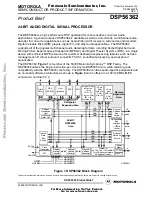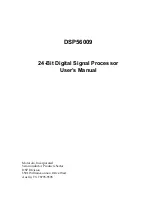
MOTOROLA
Optimizing DSP56300/DSP56600 Applications
A-1
This section
describes way to
optimize the
application for
minimal power
consumption.
Appendix
A
SAVING POWER
A very important attribute of the code efficiency is its power
requirements. The DSP programmer should use various power
saving techniques that will result in a minimal power requirement
by the application.
A.1
LOW POWER MODES
The DSP56300 and DSP56600 have several low power modes:
• Wait Standby Mode
• Stop Standby Mode
• Low-Power Clock Divider
A.1.1
Wait Standby Mode
The Wait Standby mode is entered by using the special WAIT
instruction. The WAIT instruction turns off most of the core and
chip logic until one of the following events occur:
• An Interrupt request from one of the following sources:
– an external interrupt request pin
– an interrupt request from an on-chip peripheral
Note:
An interrupt request will terminate the Wait mode only if it
is enabled and given the appropriate interrupt priority by
programming the Interrupt Priority Register and the
applicable peripheral control register.
• A DMA transfer request to one of the DMA channels
(DSP56300 only; this is not supported by the DSP56600)
During the Wait mode, all the on-chip peripherals may work if
enabled. It is common to use the Wait mode to stop processing
while an on-chip peripheral continues to communicate with an
external device. When the core needs to read or write to that
















































